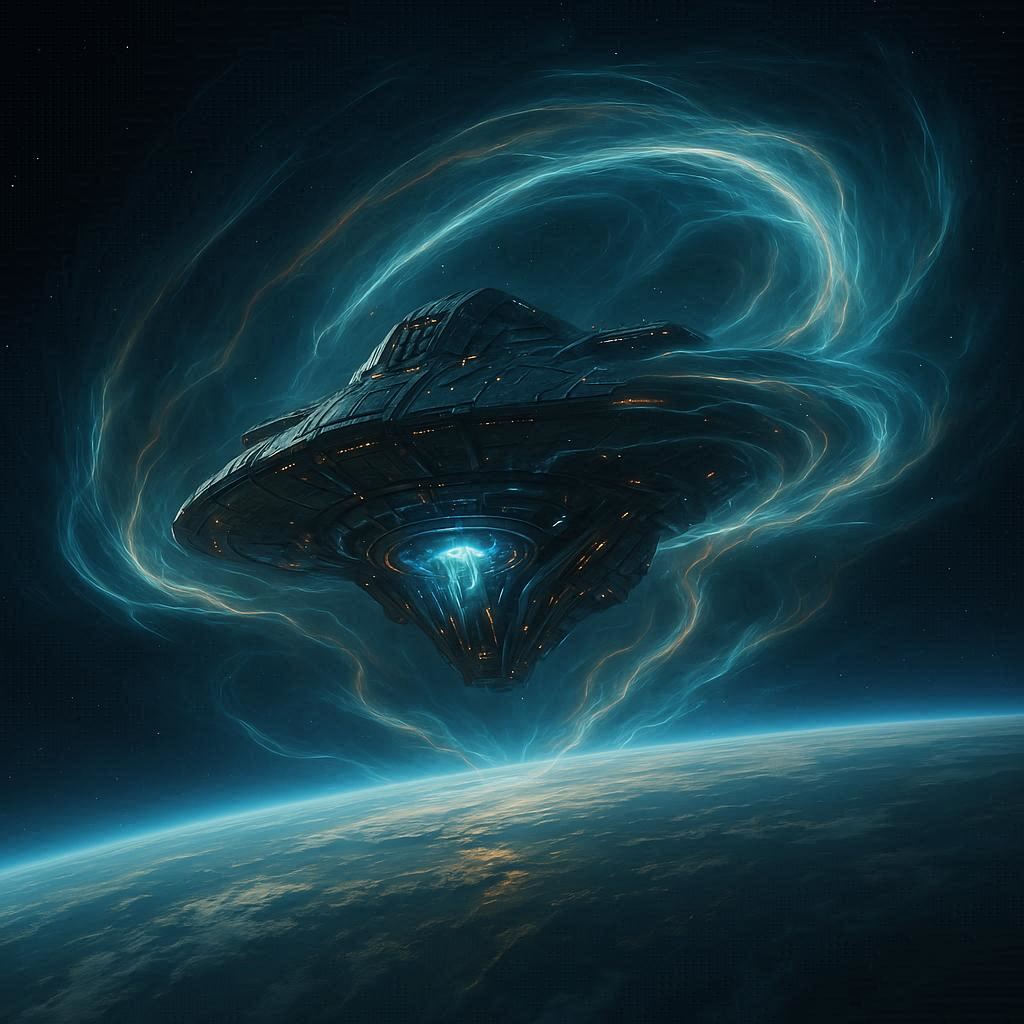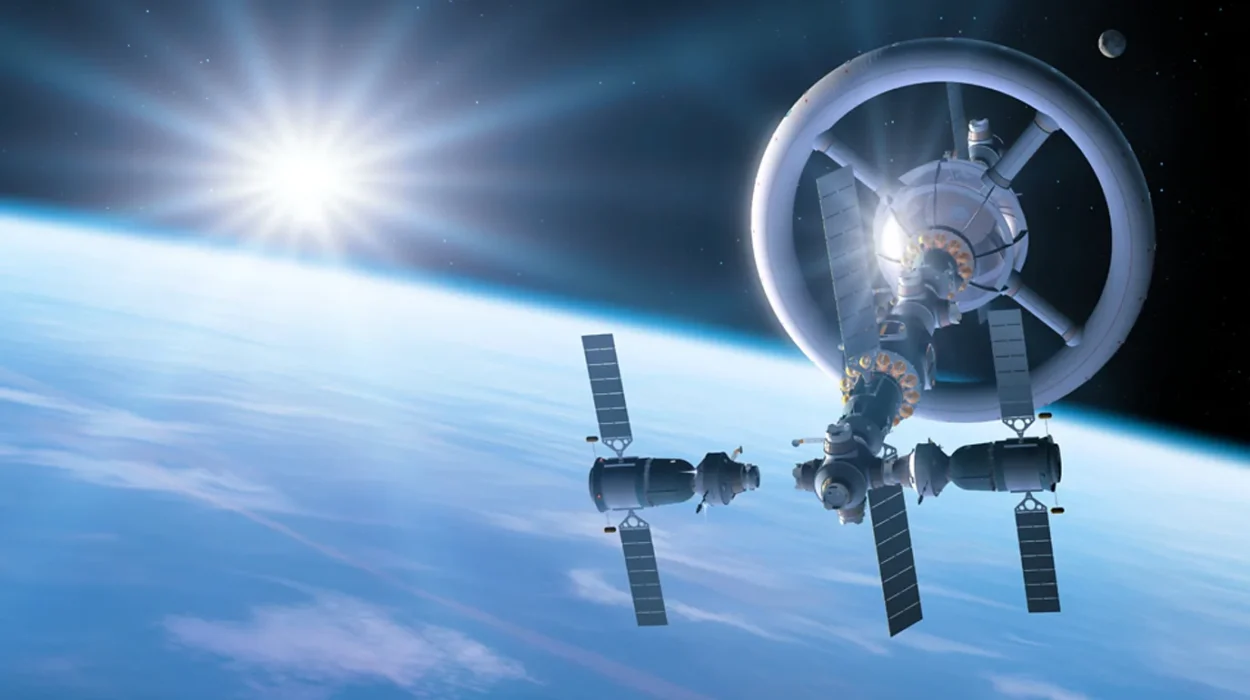For as long as human beings have gazed at the sky, they have imagined freedom from gravity’s chains. Before airplanes or rockets, before even the first hot air balloon lifted dreamers into the clouds, humanity wondered whether gravity could be defied. Myths told of winged gods and enchanted chariots that soared above the Earth. Leonardo da Vinci sketched impossible flying machines, their gears and wings designed to imitate birds. The dream of anti-gravity—of a technology that could cancel or control the invisible pull of the Earth—has always lingered at the edge of imagination.
Yet, unlike the myth of perpetual motion or alchemy, the quest for anti-gravity has not been dismissed as pure fantasy. Gravity is real, measurable, and mathematically described. If it is a force, might it be opposed? If it is a warping of space and time, might it be bent to our will? These questions have fascinated scientists and inventors for centuries, creating a body of research that is both strange and profound. The search for anti-gravity lies at the crossroads of hard physics, visionary speculation, and human longing. It is a story that begins with Isaac Newton and continues, restlessly, into the frontiers of modern physics.
Newton and the Birth of Gravity
To understand anti-gravity, one must first confront gravity itself. In the seventeenth century, Isaac Newton revolutionized the world with his law of universal gravitation. Every object with mass, Newton declared, attracts every other object. The apple falls from the tree because the Earth pulls it. The Moon circles the Earth because of that same pull, balanced by its motion. Gravity, for Newton, was a universal glue, invisible but ever-present.
Newton gave the world the mathematics to predict gravity’s effects, but not an explanation for what it truly was. Why masses attracted each other remained mysterious. He himself admitted that the idea of “action at a distance” troubled him. Yet his equations worked so well that humanity relied on them for centuries.
If gravity was universal and unavoidable, could it ever be countered? Newton himself offered no hope. Gravity, in his system, was simply a fact of existence. But questions lingered, and new centuries would bring new ways of thinking.
Einstein and the Warping of Space-Time
In 1915, Albert Einstein unveiled his General Theory of Relativity, and the universe shifted again. In Einstein’s cosmos, gravity was no longer a force acting across space. Instead, mass and energy bent the very fabric of space-time, and objects followed the curves of this geometry. The Earth orbits the Sun not because of a mysterious pulling force, but because the Sun’s mass warps the space-time around it, guiding Earth’s path like a marble rolling along a curved surface.
This elegant vision opened the door to new ideas about anti-gravity. If gravity was not a force but a warping of space-time, then in principle one might imagine creating distortions in the opposite direction. Could there be negative mass, exotic energy, or fields that pushed rather than pulled? The equations of general relativity allowed such possibilities, though no direct evidence has ever been found. Still, the concept of anti-gravity was no longer just the realm of science fiction—it became a legitimate, if speculative, question within physics.
The Golden Age of Anti-Gravity Dreams
The twentieth century was an era of astonishing technological triumphs: flight, rocketry, nuclear power. It was also an era of fascination with anti-gravity. From the 1920s through the 1960s, inventors, engineers, and even government agencies explored ways to overcome gravity in radically new ways.
Aviation pioneers were obsessed with reducing weight and increasing lift, but some dreamed of bypassing lift altogether. Tales circulated of secret research into anti-gravity propulsion systems—machines that could levitate without wings, rotors, or rockets. Newspapers published breathless reports of mysterious “flying discs” and experiments with magnetic and electrostatic levitation. Though many such claims lacked scientific grounding, they reflected a culture intoxicated by the idea that gravity could be conquered.
During the Cold War, rumors of anti-gravity research spread like wildfire. Both the United States and the Soviet Union were said to be pursuing exotic propulsion systems. Some accounts claimed that classified programs investigated “gravity control” as a potential breakthrough for space travel. Though little reliable evidence emerged, the notion of anti-gravity laboratories hidden behind government secrecy became a powerful myth, fueling public fascination with UFOs and futuristic spacecraft.
The Physics of Possibility
Amid myth and rumor, real science has continued to probe the boundaries of what is possible. While no confirmed method of generating anti-gravity exists, physics offers tantalizing clues.
One line of speculation involves the concept of negative mass. Ordinary mass creates attractive gravity. But what if a form of matter existed with negative mass, repelling ordinary matter instead of attracting it? The equations of relativity permit such exotic entities, though no experiment has ever found them. If they exist, they could provide the basis for anti-gravitational effects.
Another avenue of exploration comes from quantum physics. The vacuum of space, far from being empty, seethes with virtual particles and energy fluctuations. Some physicists have speculated that manipulating this “quantum vacuum” could produce gravitational anomalies. The Casimir effect, a tiny force that arises between closely spaced plates due to vacuum energy, hints that strange new physics lurks in the quantum realm. Could such effects be amplified to counter gravity? The idea remains speculative, but not impossible.
Then there are gravitational waves—ripples in space-time caused by massive cosmic events like colliding black holes. Detected for the first time in 2015, these waves confirm Einstein’s predictions. In principle, if space-time can ripple, perhaps it can also be engineered, twisted in ways that might mimic anti-gravity.
Anti-Gravity and the UFO Question
No discussion of anti-gravity research can ignore the cultural phenomenon of unidentified flying objects. For decades, witnesses have reported strange craft that seem to defy the laws of aerodynamics—hovering silently, darting at incredible speeds, making sharp turns that would crush human pilots. To many, these behaviors suggest a propulsion system beyond jets or rockets, perhaps something like anti-gravity.
While mainstream science has not confirmed such claims, governments have shown interest. Declassified documents from the U.S. Air Force and other agencies reveal investigations into “gravity control propulsion research.” Although no breakthroughs were made public, the persistence of these programs shows that the idea of anti-gravity was not dismissed outright, even by serious institutions.
The connection between anti-gravity and UFOs remains speculative, but it has fueled both public fascination and scientific curiosity. Could the strange craft in the sky be evidence of a technology humanity has yet to master? Or are they simply misidentified natural phenomena and human aircraft? The mystery endures.
The Challenges of Reality
Despite a century of speculation, the hard truth is that no reproducible experiment has ever demonstrated anti-gravity. Gravity remains the most stubborn of nature’s phenomena. We can shield ourselves from electricity with insulation, from magnetism with certain materials, even from radiation with lead. But gravity cannot be blocked or reversed with any known substance or technology.
Part of the difficulty lies in its weakness. Gravity is by far the weakest of the four fundamental forces of nature, yet it dominates at large scales because it only attracts—it never cancels out. To create noticeable effects, one would need extraordinary masses or exotic energy conditions far beyond our current capabilities.
Moreover, attempts to link gravity to electromagnetism or other forces have so far failed. While speculative theories exist, none have yielded practical devices. The challenge of anti-gravity is not that it is forbidden by known laws, but that it requires breakthroughs on a scale comparable to the discovery of relativity itself.
The Frontier of Modern Research
Today, anti-gravity research lives on at the edges of physics. Serious scientists are cautious, but they continue to explore. Studies of dark energy, the mysterious force driving the accelerating expansion of the universe, suggest that repulsive effects on cosmic scales are real. If the universe itself harbors anti-gravitational energy, might it someday be harnessed?
Other researchers investigate superconductors and their interactions with gravity. In the 1990s, claims emerged that rotating superconductors produced weak anti-gravity effects, though these results were never replicated. Still, the intersection of quantum materials and gravity remains an intriguing frontier.
Space agencies and defense departments occasionally revisit the subject. Most efforts focus on advanced propulsion—using ion drives, plasma engines, or nuclear reactors—but the dream of gravity control continues to whisper in the background. Whether as a scientific puzzle or a technological aspiration, anti-gravity remains alive in the imagination of researchers.
Between Science and Imagination
The strange science of anti-gravity occupies a unique place in human thought. It is a frontier where rigorous physics meets myth, where dreams of interstellar travel mingle with equations of relativity. It has inspired countless works of science fiction, from H.G. Wells to Star Wars, embedding itself in our culture as a symbol of transcendence.
What makes anti-gravity so powerful is not merely the promise of new machines but the idea of freedom itself. To escape gravity is to escape limits—to rise above the ordinary, to break free from Earth, to step into the universe unbound. It is the ultimate metaphor for human aspiration.
The Unfinished Story
Will anti-gravity ever be real? Science cannot yet answer. The history of discovery is filled with impossibilities that became reality—flight, nuclear energy, the computer. Perhaps anti-gravity will someday join that list, unlocked by a theory not yet written or a technology not yet imagined.
For now, it remains a quest, a strange science that stretches between fact and fantasy. Researchers continue to probe, thinkers continue to dream, and humanity continues to look skyward, wondering if gravity’s chains might someday be broken.
Albert Einstein once said, “Imagination is more important than knowledge. For knowledge is limited, whereas imagination embraces the entire world.” In the strange science of anti-gravity, imagination and knowledge travel together, pulling us toward the future.
The story is not over. It has only just begun.






